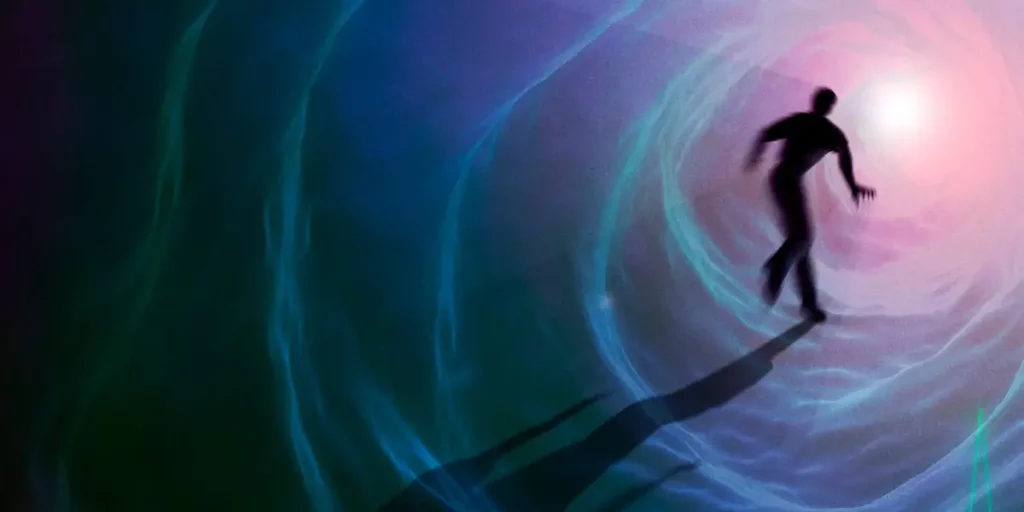Beyond Death’s Door Decoding the Secrets of Near Death Phenomena
Sci-fi writer Brian Herbert once mused, “The only guarantee in life is death, and the only guarantee in death is its shocking unpredictability.” This sentiment resonates with researchers delving into the enigma of a person’s final moments, often hindered by the paradox of querying individuals about their experiences once they are no longer present.

The challenge of understanding the sensations accompanying death is met by conversing with those who have encountered near death experiences . These individuals frequently recount encounters with bright lights, life flashbacks, and even visions of departed loved ones. Notably, Professor Kevin Nelson of the University of Kentucky underscores the paradox—while certain perceptions like a shining light are common, the near-death experience remains profoundly unique to each individual.
Despite the mystery surrounding the causes of NDEs, advancements in the field owe much to those who permit scientific scrutiny of their brains during these critical moments. Survivors attest that these encounters can be transformative. Importantly, medical experts emphasize that near-death experiences are not mere figments of the imagination; they hold tangible significance.
Understanding the mechanisms behind NDEs extends beyond sheer curiosity; it harbors potential benefits in comprehending cardiac arrests. This knowledge could prove instrumental for medical professionals deciding when to persist with resuscitation efforts after a patient’s heart ceases functioning.

Jimo Borjigin, an associate professor of neurology at the University of Michigan Medical School, highlights the broader implications of such research. “The research not only benefits our understanding of consciousness but also in understanding the importance of the heart, lung, and brain in our everyday physiology.”
Near-death experiences, characterized by heightened senses, altered time perception, and out-of-body sensations, have been reported by 1 in 10 individuals, irrespective of imminent danger. A comprehensive study categorizes these experiences into four types: emotional, cognitive, spiritual and religious experiences, and supernatural occurrences. Of these, supernatural encounters, such as the feeling of detachment from the physical body, are often recalled.

Approximately 76 percent of individuals undergoing cardiac arrest report an out-of-body experience during their near-death encounter. While some attribute this to spiritual occurrences, scientists replicate similar experiences in sleeping individuals through direct electrical stimulation of specific brain areas normally inactive in REM sleep. Professor Nelson explains this phenomenon, stating, “Like a flip of a switch, you can literally throw somebody out of their body and back into their body.”
Remarkably, insights into NDEs have also emerged from studies involving animals. A decade ago, Borjigin and her team observed rats in simulated cardiac arrest maintaining full brain activity even 30 seconds after their hearts stopped. This contradicts the assumption that an oxygen-deprived brain only remains active for a brief period.
Recent investigations by Borjigin involved critically ill patients taken off life support. Two individuals exhibited a surge in gamma brainwaves as their bodies ceased functioning. Gamma brainwaves, indicative of consciousness, peaked in an area known as the temporo-parieto-occipital (TPO) junction, responsible for integrating sensory information into conscious awareness.
This unique brain mechanism responding to oxygen deprivation offers a glimpse into the underlying causes of NDEs. Borjigin suggests that heightened brain activity in this area may allow individuals to pick up sounds, comprehend language, and even form visual images with closed eyes.

One of the most extensive studies on NDEs involves a team of international doctors tracking 567 people who underwent cardiac arrest. Employing EEGs and cerebral oxygenation monitoring during CPR, the researchers discovered bursts of brain activity, including gamma waves—an electrical activity associated with consciousness—among those initially considered dead. Of the 53 successfully resuscitated patients, 28 were cognitively capable of providing insights into their near-death encounters.
These findings challenge the conventional belief that an oxygen-deprived brain remains active for a limited duration, proposing the existence of a “hidden consciousness” immediately following death. Patients revived through CPR exhibited auditory and visual awareness during a period when conventional wisdom considered them unconscious.
Chinwe Ogedegbe, an emergency trauma center section chief and coauthor of the study, elucidates, “These patients were actually alive within, as seen in the positive waves on the EEG, but externally they were dead.” The study’s implications extend beyond the brain’s resilience to oxygen deprivation, suggesting an alternative “braking system” that explains distorted perceptions of consciousness in unconscious states.
This system, absent during wakefulness, inhibits irrelevant information. However, in unconscious states, it disappears, potentially allowing dormant brain pathways to activate, providing access to a deeper realm of consciousness encompassing memories, thoughts, and actions.
The study emphasizes the need for further research, advocating for increased participant numbers to gain a more comprehensive understanding of the diverse brain activities during critical moments. Expanding the scope to 1,500 participants could shed light on whether altered consciousness trends more towards visual or auditory experiences.
In conclusion, the exploration of near-death experiences stands at the intersection of science and metaphysics. Unraveling the mysteries surrounding these profound encounters not only deepens our understanding of consciousness but also holds promise for enhancing medical interventions during critical health crises
